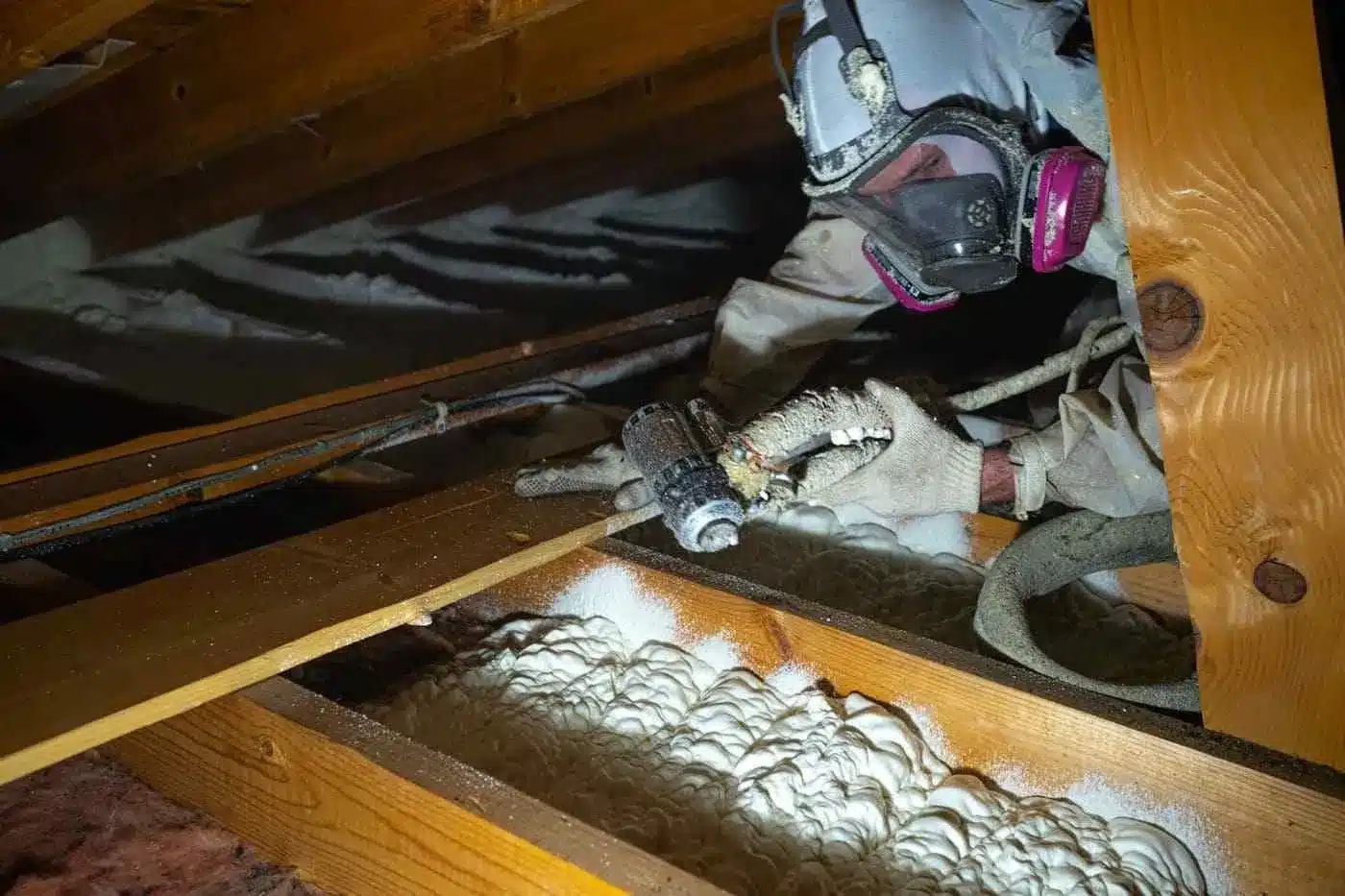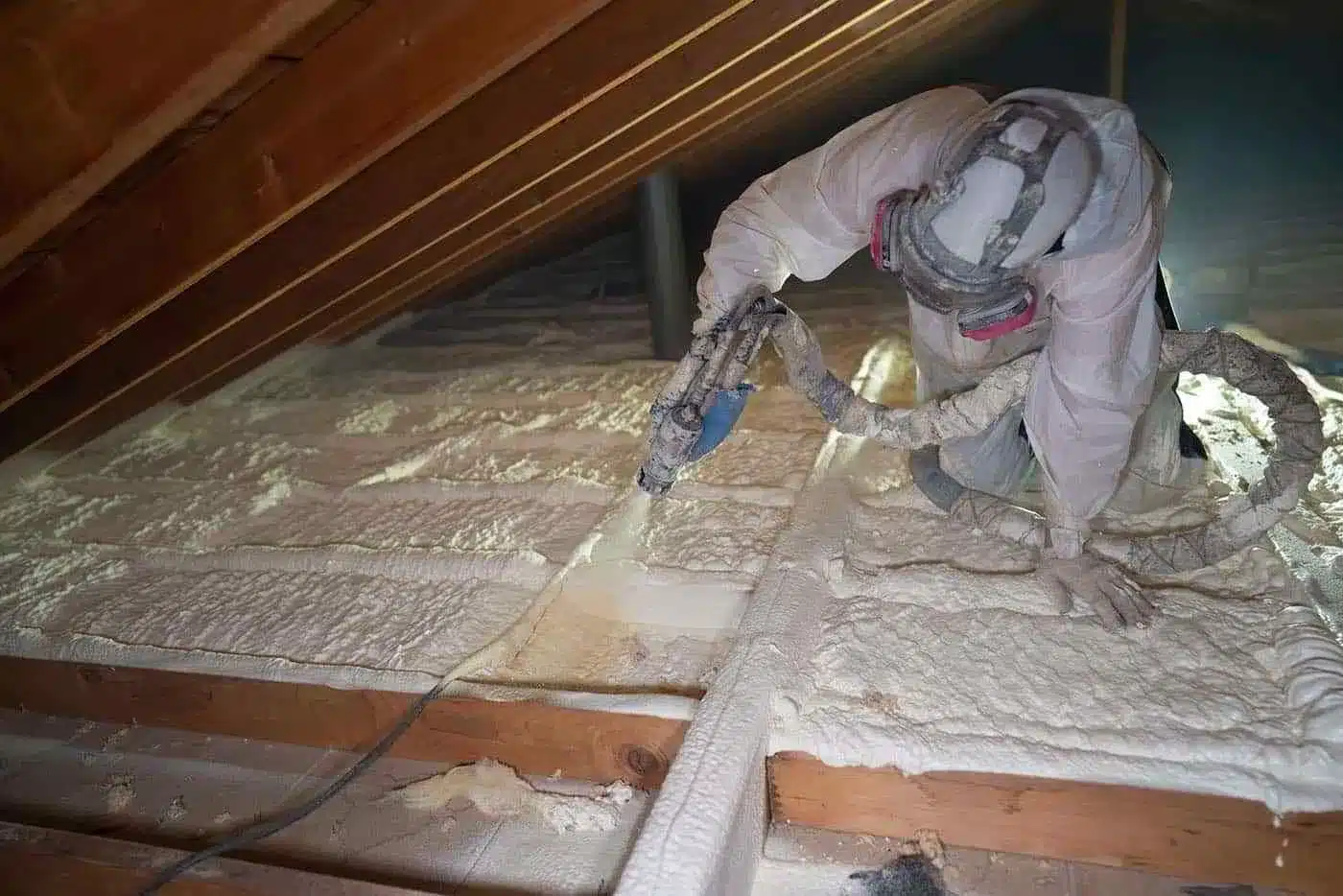Air leaks aren’t just a nuisance—they’re a silent, ongoing cost for both residential and commercial buildings. Even small gaps around windows, doors, foundations, or attic access points can lead to substantial energy loss. Targeted air sealing addresses these specific leakage areas, improving overall performance without the need for complete structural overhauls.
By targeting high-leakage zones, building owners can reduce energy costs, maintain consistent indoor comfort, and prevent moisture problems that cause long-term damage. This article explains why hiring a precision air sealing contractor is more effective than using generalized methods, highlights the most critical areas to address, and outlines how professionals identify and fix these vulnerabilities.
What Is Targeted Air Sealing?
Targeted air sealing is the process of identifying and sealing specific leakage points in a building to reduce uncontrolled airflow. Rather than applying sealing materials broadly, professionals focus efforts where the most energy loss occurs.
High-Leakage Zones Often Overlooked
- Attic hatches and pull-down stairs often leak air between conditioned and unconditioned spaces.
- Wall penetrations from plumbing, cables, or electrical outlets act as unsealed pathways.
- Basement rim joists are frequently uninsulated and left open to airflow.
- Duct boots in ceilings and floors can have gaps that go unnoticed.
Sealing Methods Based on Location
Different areas require different solutions:
- Spray foam for irregular gaps or large voids
- Caulking for small cracks along window trim or framing
- Foam gaskets for electrical outlets and switch plates
Air sealing needs to be strategic. Applying the right solution in the right location increases effectiveness and longevity.
How Air Sealing Improves Energy Efficiency
The impact of targeted air sealing is most visible in energy savings and system performance. Reducing air leaks creates a controlled environment where heating and cooling systems don’t overwork to compensate for drafts.
Reduces HVAC Load
Unsealed buildings force HVAC systems to run longer and more frequently. By sealing critical leak zones:
- The heating and cooling cycle is more stable.
- Systems last longer with reduced wear and tear.
- Utility bills drop as conditioned air remains inside.
Supports Whole-Building Efficiency Strategy
Energy upgrades (like insulation or window replacements) are less effective if air sealing is ignored. Without it, insulation can’t prevent convective air movement, which undermines its thermal resistance.
| Improvement Type | Energy Impact Without Sealing | Energy Impact With Targeted Sealing |
|---|---|---|
| Attic Insulation | 5–10% energy loss persists | 20–30% reduction when sealed first |
| Window Replacements | Drafts remain in framing gaps | Airflow minimized with perimeter sealing |
| HVAC Upgrades | Air leaks stress system | System operates efficiently |
Detection Tools for Effective Targeting
Precision matters in air sealing. Tools help identify where sealing is needed, rather than relying on guesswork.
Blower Door Testing
A blower door test depressurizes the building, highlighting how much air enters through gaps. It identifies:
- Total air change rate
- Leakage locations
- Pressure imbalances
This data is key for prioritizing sealing tasks.
Infrared Thermography
Thermal imaging cameras detect temperature differences that signal where air is infiltrating or escaping. It’s especially useful:
- Around insulation voids
- Behind wall cavities
- At junctions between floors and walls
Targeted vs General Air Sealing: What’s the Difference?
General air sealing takes a surface-level approach. Targeted sealing, by contrast, uses diagnostics to focus on leakage pathways that contribute most to energy waste.
Benefits of Targeted Approach
- Less material waste
- Faster implementation
- Higher ROI
- Avoids sealing over unnecessary areas
When General Sealing Falls Short
In older commercial properties, for example:
- Sealing without inspection may overlook internal wall pathways.
- HVAC duct leaks may persist unnoticed.
- Crawlspace vents might remain open, pulling in outside air.
Without diagnostics, general sealing misses the high-impact zones.
Why Commercial Properties Benefit Even More
Large commercial buildings have more complexity—and more opportunity for energy loss. Precision sealing delivers measurable operational improvements.
Controls Humidity and Mold Risks
Moist air infiltrates through cracks and condenses inside walls or ducts, triggering mold. Sealing controls:
- Moisture migration
- HVAC humidity load
- Indoor air quality degradation
Supports LEED and Energy Certifications
Targeted air sealing contributes toward energy performance credits in green building standards. It helps:
- Reduce air leakage to acceptable thresholds
- Lower energy use intensity (EUI)
- Align with ENERGY STAR benchmarks
Conclusion
Targeted air sealing isn’t just a support task—it’s a foundational improvement that enhances energy efficiency, system longevity, and indoor air control. Both homeowners and commercial property managers benefit from identifying and sealing high-leakage zones with purpose and precision.
Using diagnostic tools like blower door tests and thermal cameras, sealing efforts can be applied where they matter most. The result is measurable energy savings, better indoor air quality, and protection against moisture-related damage. Whether preparing for the best insulation contractor or aiming for green certifications, targeted air sealing delivers practical, long-term value.
FAQs
Where do most buildings lose air?
Air leaks are most common around attic access points, wall penetrations, rim joists, and ductwork junctions. These areas often remain untreated during construction and renovation.
How is a blower door test used in air sealing?
It depressurizes the building to reveal leakage areas and airflow volume. The results guide professionals to focus sealing where it will have the highest impact.
What materials work best for targeted air sealing? Spray foam is ideal for irregular gaps and larger voids. Caulk suits tight seams and joints. Gaskets are often used behind outlets or switch plates.
Does targeted sealing help with indoor air quality?
Yes. Sealing prevents outside pollutants, moisture, and allergens from entering, reducing the burden on HVAC filtration systems and improving air consistency.
Can air sealing reduce noise as well?
Sealing air gaps can minimize external sound transmission, particularly from traffic or adjacent units. This added benefit is often noticeable in shared-wall buildings.
Reviewer: Ava Clark shared her input based on 6 years of working with spray foam insulation teams. Her focus on customer trust and communication helped shape key parts of this post.











